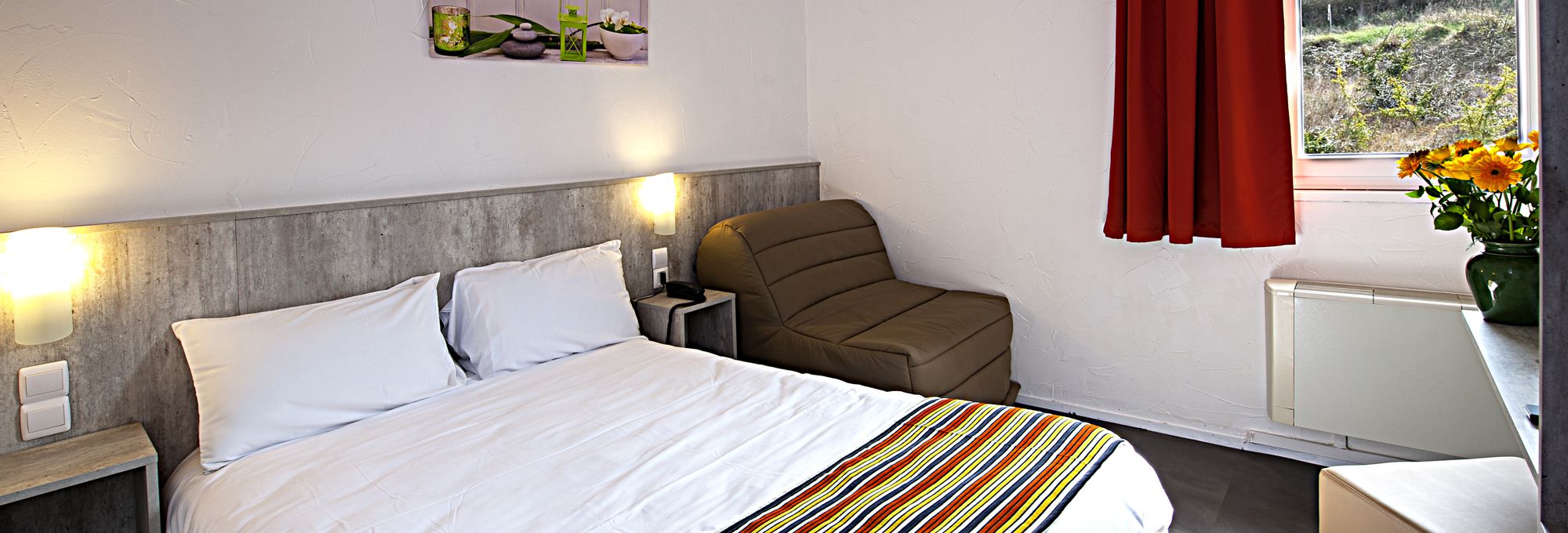Tourism
80 kilometres to the east of Toulouse, Carcassonne is part of the Aude department and Languedoc-Roussillon region.
This sunny town of around 48,000 inhabitants offers you all its historical and tourist treasures during your stay at the Brit Hotel Le Bosquet.
History and Culture
On the cultural and historical level, Carcassonne is brimming with monuments and sites which have marked its local history.
Firstly, you can visit Carcassonne’s emblematic Cité Médiévale, listed as a UNESCO World Heritage Site and etched with 2000 years of conquests and crusades.
Situated on the right bank, it is easily accessible on foot, over the typical Pont Vieux bridge, dating from the 14th century, then either through the Porte Narbonnaise, the main entrance flanked by two imposing towers, or through the Porte d’Aude, a picturesque pathway with an unobstructed view over the ramparts.
The Cité notably houses the Château de Comtal, a fortress where the Viscounts of Carcassonne used to reside, which boasts nine towers of which two date from the Visigoth age, and also the Saint-Nazaire Basilica, an ancient church of Roman origins, dating from the 11th century.
On the right bank, visiting the Bastide Saint-Louis, commonly known as the Ville Basse” (lower city), will allow you to explore the Cathédrale Saint Michel, of a Gothic Languedoc style, as well as the 13th-century check patterned streets, and to see the Porte des Jacobins, one of the Bastide’s last four remaining gateways.
It is possible to have a guided tour on foot, in a mini-train or in a horse-drawn carriage around the Bastide Saint Louis and the Cité Médiévale.
Museums
With regard to museums, different possibilities are available to you: the Museum of the Beaux-Arts, where European art is on show in the form of paintings and ceramics, the Musée Trésor de Notre Dame de l’Abbaye, based in the town's oldest place of worship, or the Musée de l’Ecole, where you can discover, helped by media and interactive features, what primary school was like between 1880 and 1960.
Cuisine
On the food front, the cuisine is typical of the South-West, with Languedoc influences.
Among the specialities, you can discover the knuckle of ham, the ‘petits carcassonnais’ (orange and vanilla sponge cakes), or the Carcassonne cassoulet, which is distinguished by the addition of partridge meat.
Wine Cultivation
On the wine front, numerous vineyards can be found in the surrounding area, which produce Corbière, Fitou and Minervois wines among others.
Activities
As for activities, certain sites such as the Canal du Midi and its many locks, listed as a UNESCO Humanity Heritage Site, offer trips on foot, on a bike or in a boat, by means of a river cruise.
The Cavayère Lake, a place to walk and relax, is also recommended on account of its water activities and the many facilities on offer at the Raymond Chesa Leisure Complex: pedaloes, water inflatables, mini golf, beach volleyball, forest adventure courses...
As a family, discover the Parc Australien, a leisure and animal park, where you can see remarkable Australian animals and find out about the little-known Aboriginal culture of Australia, with different interactive activities, guided visits and other entertainment.
The surrounding area
Don’t hesitate to explore Carcassonne’s surrounding area: head off to discover Aude’s Limousis grottos, or the Aguzou grottos towards the Pyrenees, the Giant Chasm of Cabrespine at the heart of the Black Mountains, automaton and dinosaur museums, châteaus like that of Chalabre, the historical and interactive 2500m² leisure park, or the park of Peyrepertuse, an immense fortress which hosts the most important medieval festival in the South of France.
Looking for thrills?
Take up canoeing, kayaking, rafting, whitewater hydrospeed on the river Aude, or water sports such as jet-skiing, kite-surfing, sailing or scuba diving on the coast!
The town of Carcassonne is best described by the Tourist Office!
Activities in Carcassonne








